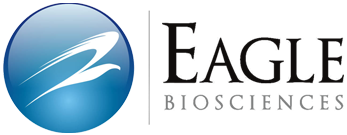
iLite Type I IFN Assay Ready Cells
IFN Assay Ready Cells Developed and Manufactured by Svar Life Science
The Eagle Biosciences iLite Type IIFN Assay Ready Cells are intended for:
- Quantification of interferon alpha or beta activity
- Determination of Interferon alpha or beta NAbs
Content: iLite® Type I IFN Assay Ready Cells 1 vial (2.5mL)
Alternative Names: Type I Interferon Assay Ready Cells
For Research Use Only
Key benefits of iLite® Assays
- Highly specific reporter gene cell lines
- Very sensitive cell line responses (>10 fold inductions)
- Assay Ready Cells – ready-to-use from the freezer, without culturing of cells
- Assays within a workday (typically 4-7 hour assays)
- Normalization gene, which eliminates unwanted matrix effects
Product Overview
In this product, human cells (U937, ATCC# CRL1593.2) engineered to express Firefly Luciferase under the control of an IFN α/β responsive promoter. When IFNα or IFNβ binds to the IFN α/β receptor on the cell surface, the IFN α/β regulated Firefly Luciferase reporter gene construct will be activated, resulting in a luminescent signal.
Principle
Interferon alpha (IFNα) has been widely used to treat chronic viral hepatitis and a wide variety of malignant diseases, including hairy cell leukemia, basal cell carcinoma, chronic myeloid leukemia and cutaneous T-cell lymphoma. Several different recombinant preparations of IFNα are available commercially; the most commonly used formulations include IFNα2a and IFNα2b. A number of studies have shown that development of anti-IFNα neutralizing antibodies (NAbs) is correlated with a loss of IFNα treatment efficacy. Interferon beta (IFNβ) is well established as first line therapy in relapsing/remitting multiple sclerosis. The occurrence of NAbs and binding antibodies (BAbs) to IFNβ has been widely reported. Subjects with NAbs have shown reduced response to treatment with IFNβ, having higher relapse rates, increased MRI activity and higher risk of disease progression. The frequencies and titers of NAbs vary depending on the preparation used, dose and frequency of administration and also the assay used to quantify them.
Products Related to IFN Assay Ready Cells
iLite Insulin Assay Ready Cells
iLite FGF-21 Assay Ready Cells
iLite IL-2 Assay Ready Cells
ebiomall.com






>
>
>
>
>
>
>
>
>
>
>
>
先提取RNA,反转录成cDNA,然后根据目的基因设计PCR引物,通过半定量RT-PCR确定目的基因表达.
正因为检测的是mRNA,所以要先反转录成cDNA才能PCR.
细胞转染是指将外源分子如DNA,RNA等导入真核细胞的技术。随着分子生物学和细胞生物学研究的不断发展,转染已经成为研究和控制真核细胞基因功能的常规工具。在研究基因功能、调控基因表达、突变分析和蛋白质生产等生物学试验中,其应用越来越广泛。
方法
脂质体转染法
阳离子脂质体表面带正电荷,能与核酸的磷酸根通过静电作用,将DNA分子包裹入内,形成DNA脂复合物,也能被表面带负电的细胞膜吸附,再通过融合或细胞内吞进入细胞。脂质体转染适用于把DNA转染入悬浮或贴壁培养细胞中,是目前实验室最方便的转染方法之一,其转染率较高,优于磷酸钙法。由于脂质体对细胞有一定的毒性,所以转染时间一般不超过24小时。常用细胞类型:cos-7 、BHK、NIH3T3 、Hela等。
电穿孔转染法
电流能够可逆地击穿细胞膜形成瞬时的水通路或膜上小孔促使DNA分子进入胞内,这种方法就是电穿孔。当遇到某些脂质体转染效率很低或儿乎无法转入时建议用电穿孔法转染。一般情况下,高电场强度会杀死50%-70% 的细胞。现在针对细胞死亡开发出了一种电转保护剂,可以大大的降低细胞的死亡率,同时提高电穿孔转染效率。
病毒感染
对于脂质体转染与电穿孔转染都无法成功转染的细胞系建议用病毒感染,此法可以快速100%感染,检测成功率高。
常用步骤
1. 转染试剂的准备
① 将400ul去核酸酶水加入管中,震荡10秒钟,溶解脂状物。
② 震荡后将试剂放在-20摄氏度保存,使用前还需震荡。
2. 选择合适的混合比例(1:1-1:2/脂质体[1]体积:DNA质量)来转染细胞。在一个转染管中加入合适体积的无血清培养基。加入合适质量的MyoD或者EGFP的DNA,震荡后在加入合适体积的转染试剂,再次震荡。
3. 将混合液在室温放置10―15分钟。
4. 吸去培养板中的培养基,用PBS或者无血清培养基清洗一次。
5. 加入混合液,将细胞放回培养箱中培养一个小时。
6. 到时后,根据细胞种类决定是否移除混合液,之后加入完全培养基继续培养24-48小时。
最近因工作需要,欲购进一些生产用的细胞株和瞬转、稳转质粒,大家有什么推荐的品系和公司或网站,谢谢!!!
主要需求:
1.生产或生物制药用的,稳定细胞株如CHO-K1、GS和HEK293/HEK293T,以及与之对应的瞬转、稳转(重组整合)质粒(需详细图谱)。
2.原始或改造细胞株,以及对应质粒,改造细胞株请详述细节,原因,优缺点,安全性等。
3.希望大家积极推荐,实验用、生产用均可,原核、真核都行,网站或品系名称也行,只要大家觉得常用、稳定、安全、高产就行。
4.请有意向的同仁回帖或将详细资料发至我163邮箱:wangqiang23mars@163.com,万分感谢。
对于瞬时转染的检测:如果有报告基因,就通过报告基因的表达看转染成功与否;没有报告基因的话,就在24~96h内收获细胞通过RT-PCR和WB来鉴定。









